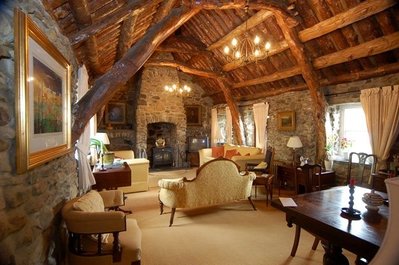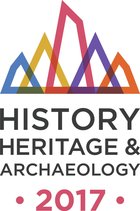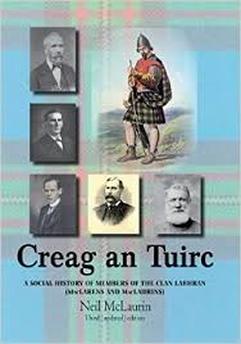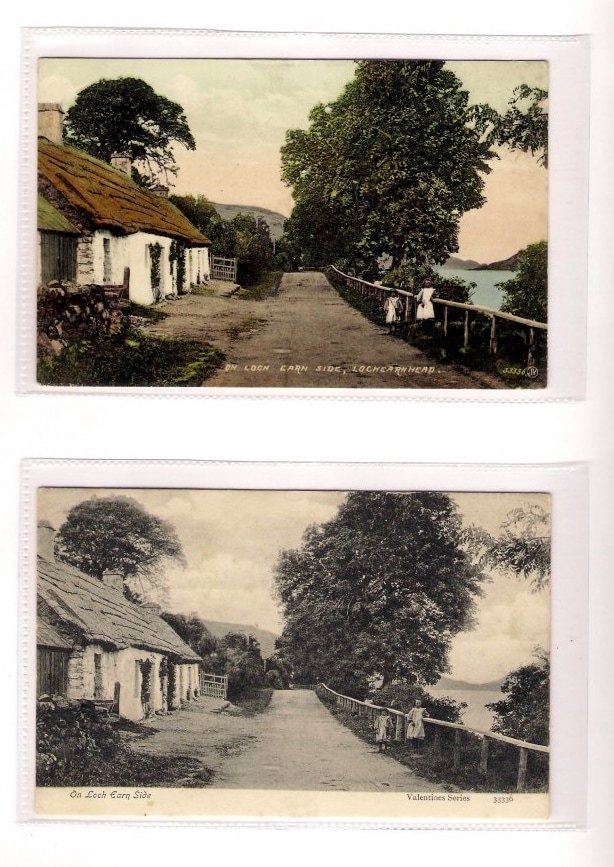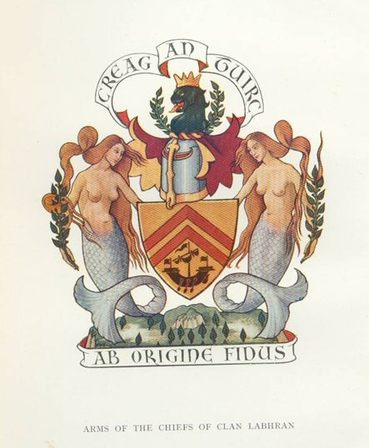History and Heritage of B listed Briar Cottage on the banks of Loch Earn
We (Fraser and Kim) moved to Lochearnhead in 2008 to live in Briar Cottage, a 17th century “B listed” thatched cottage. Known as Easter Achraw until 1900, the earliest inhabitants on record were MacGregor’s, although they used the pseudonym Murray. The name MacGregor could only be used on pain of death after King James VI decreed it so in 1604, following alleged atrocities by the clan.
Creag An Tuirc by Neil McLaurin focuses on the social history of members of the Clan Labhran. MacLarens and McLaurins over a 300 year period. More information is available from the Clan MacLaren Society Meet the chief, chieftan and its diaspora annually in July when they gather for the Balquhidder, Lochearnhead and Strathyre Highland Games held in Lochearnhead on a chosen Saturday. Visit the MacLaren tent and watch them battle against The MacGregors in the tug of war. The MacLaren chief rallies the clan at Creag an Tuirc in Balquhidder on the Sunday morning following a church service.
Briar Cottage (Easter Achra/Achraw) was home to 200 years of a family of McLaren's. Imagine Kim's surprise when she discovered that her 7 times great grandmother was descended from the local clan. Janet McLaren born in 1670 in the Parish of Comrie. Janet married Patrick Stewart who was born on Lawers Estate in 1665.
Gaelic Language Spotting
In the early years of Briar Cottage and Easter Achraw farmlands, locals would have spoken Gaelic. I gather that most people spoke Gaelic in the rural areas until the early 17th century. There are still one or two in this area today that speak Gaelic and teach it to playgroup children. It is considered to be a dying language though the BBC does have a dedicated Gaelic speaking TV channel called BBC Alba. It is easy to spot the language to this day because of place ames. Look out for "Stob" meaning peak or summit. "Creag" a rock or crag like Creag An Tuirc - the crag behind Balquhidder Kitk that was the ancient rallying place for Clan MacLaren. "Alt" a stream or burn. "Mhor or Mor" means large or great. The word sìth or sìdh ( (shee) can mean hill or fairy and often fairy hill.There are many words that you might come across. The Loch Lomond &Trossachs National Park references some Gaelic names that are found in the area though you may enjoy researching others as you happen across them.
